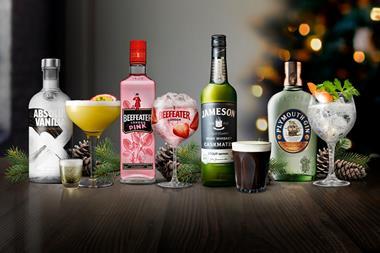“Christmas came early for Campari this year,” proclaimed Campari CEO Bob Kunze-Concewitz last week, as the Italian spirits maker snapped up the Courvoisier cognac brand from Beam Suntory for $1.2bn (£950m).
Campari’s biggest-ever acquisition is part of the “transformational” change Kunze-Concewitz is reportedly seeking before he vacates the hotseat at the Aperol brand owner next year.
But shares dipped on the announcement. So why is Campari making the move now, at a time when spirits sales are faltering? And what’s at stake if the deal goes sour?
There are clear points in favour of the deal. As a top four cognac brand – it’s sold in 160 markets with global net sales of $249m – Courvoisier has the firepower to grow group sales by approximately 9%. It will double the size of Campari’s business in the UK and Ireland, which accounted for 16% of Courvoisier’s sales by value and 26% by volume in 2022.
Ultimately, the deal will make cognac “the fourth pillar” of its global business, alongside apertifs, tequila and bourbon, Kunze-Concewitz told analysts.
International footprint
Crucially, the deal also has the potential to increase Campari’s exposure to the US market. Opportunities to materially reconfigure the size and shape of a business as large as Campari’s don’t come around very often. The US market – for all its recent travails – remains a must-win for any spirits powerhouse with global ambitions.
In acquiring a global brand like Courvoisier, which draws 60% of its sales from the US, Campari will become a meaningfully bigger and more US-centric business overnight.
It also gives Campari greater portfolio diversity. The group already has a healthy presence in bourbon (Wild Turkey, Wilderness Trail) and tequila (Espolòn). Adding a more traditional cognac to Grand Marnier rounds out its portfolio to tap into US spirits trends – and Campari anticipates Courvoisier becoming its third-largest brand in that market.
Courvoisier currently punches below its weight in Asia and GTR. But there’s potential to fix that if Campari puts to use its expertise in revitalising brands like Grand Marnier and Appleton Estate, both of which have grown under its stewardship by refocusing on higher-end, premium and aged expressions. Given Courvoisier’s healthy liquid stock levels, shifting the focus from VS to VSOP and above in the medium term is eminently possible.
As a final positive point, the purchase also creates production synergies and efficiencies with the other French brands like Grand Marnier and Champagne Lallier in Campari’s stable.
Cashflow and destocking
A deal of this stature doesn’t come without risks, however. The headline-grabbing price of $1.2bn, with a further possible consideration of $0.12bn, will increase Campari’s net debt/EBITDA ratio from 2.6 to 4, and result in an 80 basis point hit to its gross profit margin. Campari plans to fund the deal through a mixture of cash, debt and equity, which comes at an opportunity cost in an era of high interest rates.
There’s also another risk to consider, in the form of the destocking that has blighted cognac in the US and China in recent months. Kunze-Concewitz was keen to stress Campari believes the problem to be cyclical, rather than structural, but US consumers can be a fickle bunch. If cognac loses momentum to rising stars like tequila and US whiskey, dropping top dollar on Courvoisier could prove an expensive mis-step.
So it’s understandable that investors are a bit spooked by the deal. Shares in Campari sunk 6% in the immediate aftermath of the announcement, before rallying to hover around 2.25% lower. That’s unlikely to leave senior figures at Campari losing sleep, but will serve as a reminder that a deal of this size is as much of a gamble as it is a gift.




















No comments yet